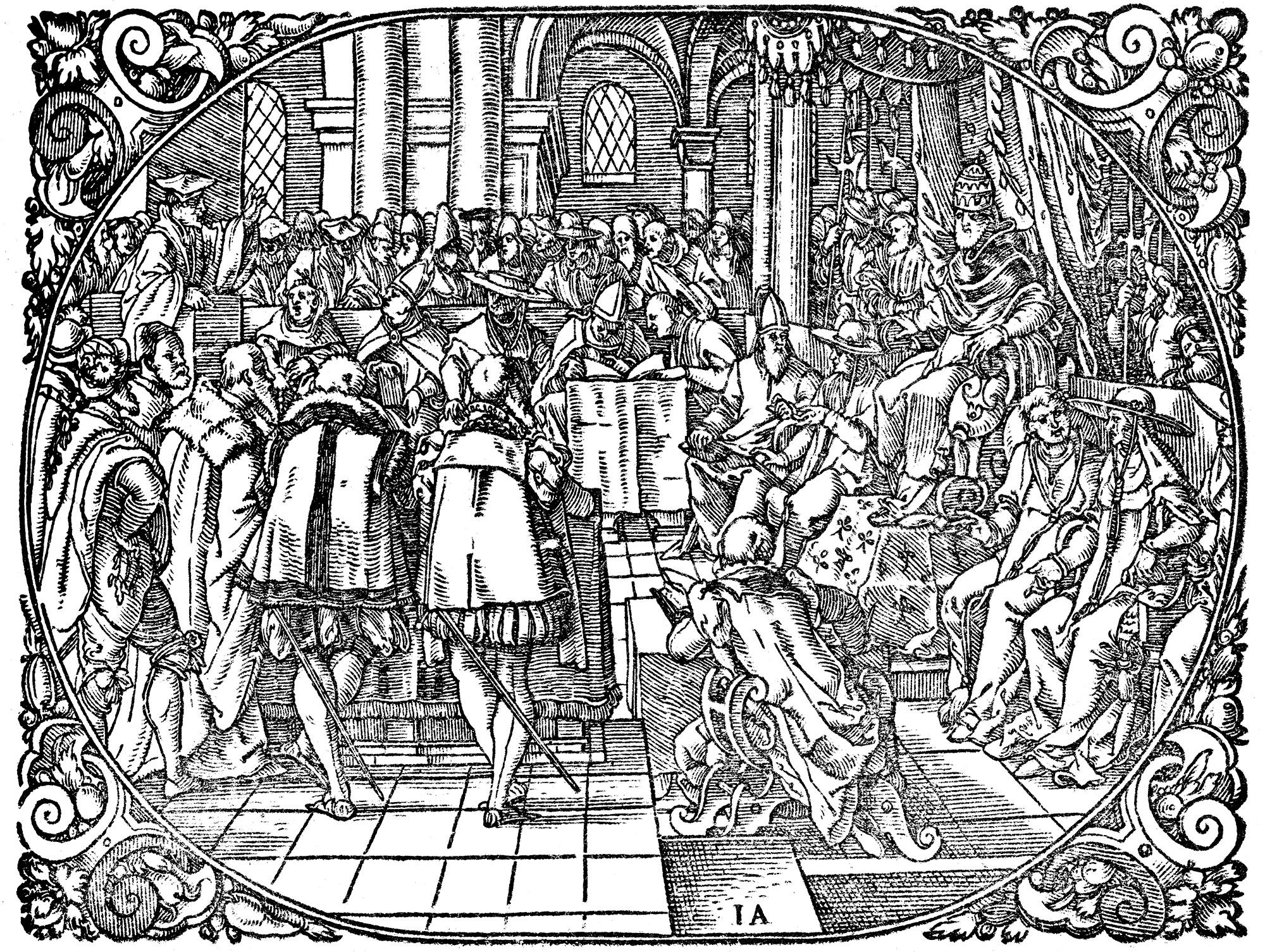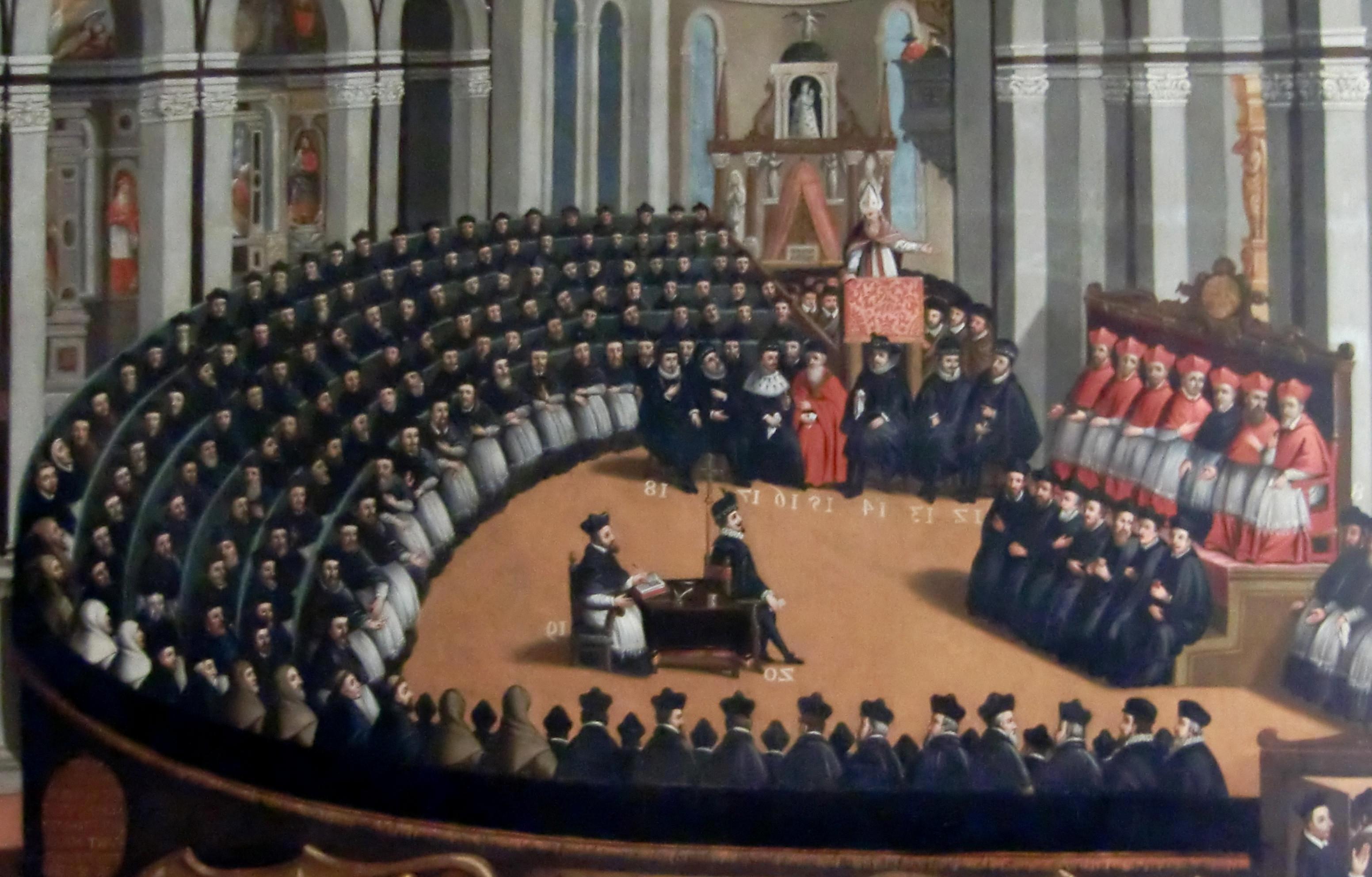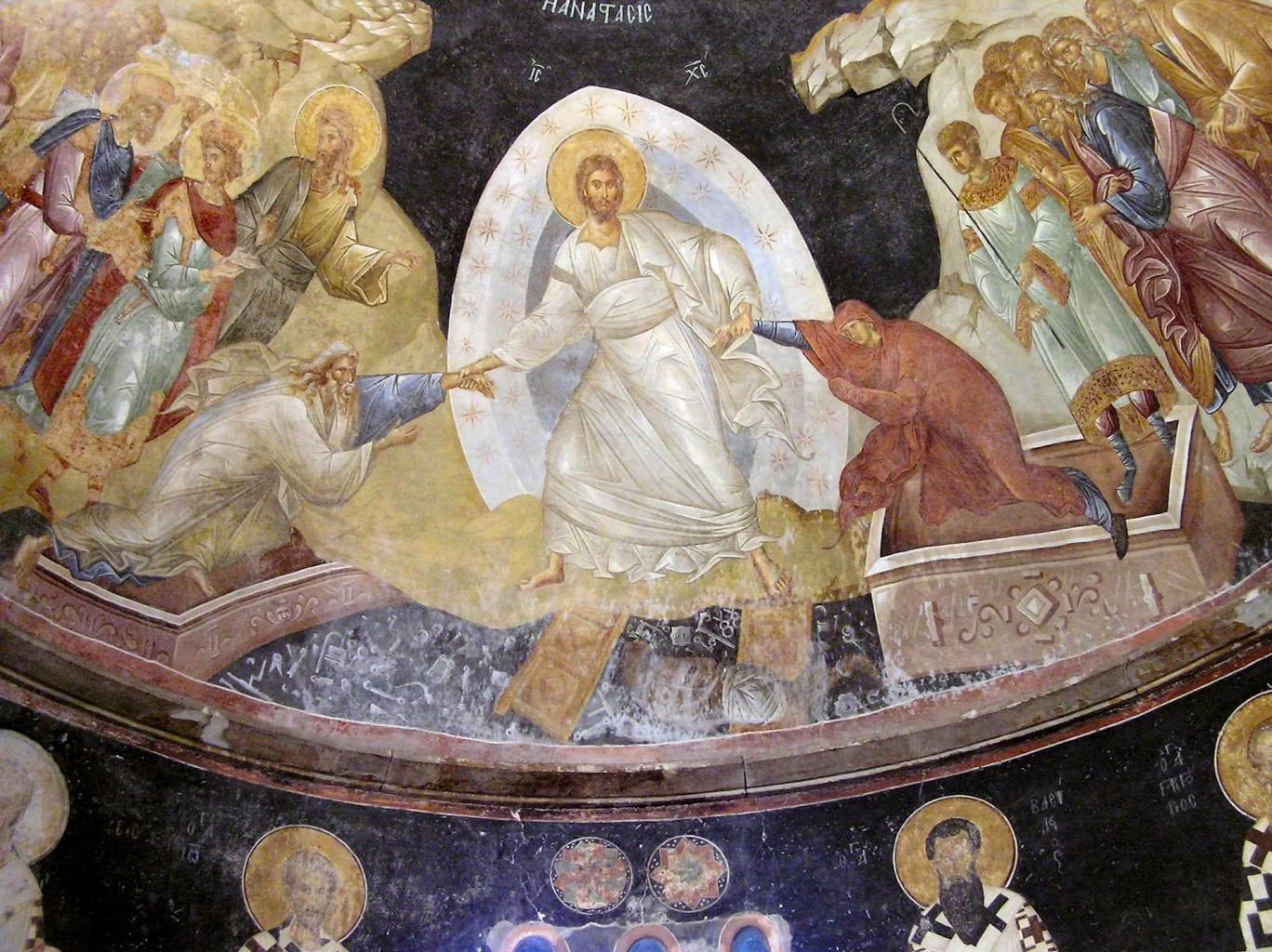The Council of Trent, which was held between 1545 and 1563, had an enormous impact on the Catholic Church and its teachings. This council was initiated by Pope Paul III in response to the Protestant Reformation and was a major turning point in the history of Christianity.
The primary goal of the Council of Trent was to reform abuses within the Church and reaffirm the authority of Roman Catholicism. It addressed issues such as abuses within church offices, financial corruption, and questions about faith and doctrine that had been raised by Luther’s Reformation.
One important result of the Council of Trent was its reaffirmation of the Papacy’s supreme authority over all other religious organizations. This restored a sense of unity among Catholics around the world who believed in papal infallibility. The council also declared that justification could only be achieved through both faith and good works, in contrast to Luther’s teachings that salvation could be attained through faith alone.
The Council also established seminaries for training priests, leading to a better educated clergy who were more familiar with scripture and able to effectively teach it to their congregations. Additionally, it issued decrees that addressed various abuses such as simony (the buying or selling of religious offices), nepotism (favoring certain family members when appointing church officials), pluralism (holding multiple church offices at once), absenteeism (holding a church office without actualy performing any duties related to it), etc.
Finally, the Council declared that Scripture and Tradition were both authoritative sources for teaching about faith – rejecting Luther’s idea that Scripture should be seen as superior to tradition. This helped revitalize Catholic teaching and practice across Europe in light of growing Protestantism.
In short, these reforms greatly strengthened Catholicism during this time period and laid down foundations for modern Catholic beliefs today. The effects of this council are still felt today throughout all branches of Christianity – making it an event worth remembering in history books!
The Impact of the Council of Trent
The main result of the Council of Trent was the reaffirmation and strengthening of the authority and centrality of the Catholic Church. This included codifying scripture, reforming abuses within the Church, establishing seminaries for a better-educated clergy, and condemning the Protestant Reformation as heresy. Additionally, numerous doctrinal statements were made during this period that still serve as a major source of Catholic doctrine today. The Council’s decisions also had a significant impact on European society, leading to increased Catholic religious practice and education, as well as a hardening of divisions between Catholics and Protestants. Ultimately, it served to bring abot a renewed sense of unity in the Catholic Church in response to the challenges posed by Protestantism.

Source: commons.wikimedia.org
The Success of the Council of Trent
The Council of Trent (1545-1563) was a monumental event in the history of the Catholic Church and its success can be measured in a number of ways. Firstly, it reaffirmed many of the core beliefs of Catholicism, such as the seven sacraments, original sin, and the primacy of Scripture. Secondly, it also resulted in a number of practical reforms, such as reinforcing clerical celibacy and reforming church finances. Thirdly, it brought about an increased emphasis on religious education for both clergy and laity alike. Finally, it confirmed the papacy to be essentially Italian in nature and this remained true for the next 400 years.
All told, these changes made by the Council of Trent had far-reaching consequences for Roman Catholicism around the world and helped to bolster its position within Europe. The fact that no general council was called for anothr 300 years after Trent is testament to its success in achieving its aims. Thus, it can be said that overall, the Council of Trent was successful in terms of both doctrine and reform.
The Council of Trent and Its Outcomes
The Council of Trent was an ecumenical council held by the Roman Catholic Church between 1545 and 1563. It was convened in response to the Protestant Reformation, which had spread throughout Europe, to define Catholic doctrine and effect reforms within the Church. The Council of Trent issued three major documents: a Decree on Justification, a Profession of Faith, and a Catechism.
In terms of doctrine, the Council of Trent affirmed the supremacy of Scripture over tradition and defined seven sacraments: baptism, confirmation, Eucharist, penance, ordination, marriage and extreme unction. It also clarified the roles of faith and works in justification; declared that salvation could not be attained outside the Church; rejected all forms of indulgences for financial gain; and condemned usury as immoral.
In terms of reform, the Council addressed abuses such as simony (the sale of spiritual offices), clerical concubinage (sexual relationships between clergy) and nepotism (favoring family members for positions). It sought to strengthen religious education by establishing seminaries for priestly training; reforming monastic life with stricter observance of rules; limiting pluralism (holding multiple benefices); requiring diocesan synods to be held regularly; and reinvigorating preaching thrugh local visitations. Furthermore, it established new procedures for conducting church councils.
Overall, the Council of Trent helped to reaffirm Catholic doctrine in response to Protestant challenges while providing a platform for self-reform within the Roman Catholic Church.
Outcomes of the Council of Trent
The Council of Trent, held between 1545 and 1563, was one of the most significant events in the history of the Catholic Church. It marked a turning point in the Counter-Reformation, when the Catholic Church sought to respond to the challenges posed by Protestantism. The Council produced three key outcomes:
First, it established a confession of faith that firmly asserted the supremacy of papal authority. This was made clear in its decrees on Original Sin and Justification, where it condemned Protestant doctrine and affirmed traditional Catholic beliefs. Second, it rejected the Protestant view of Scripture as the sole source of religious truth. Instead, it declared that tradition and reason were also essential elements for interpreting Scripture correctly. Third, it implemented reforms that aimed to improve clerical discipline and moral standards among both priests and laity. These included measures such as prohibiting nepotism within the Church hierarchy and introducing regulations on how priests should be appointed and promoted.
In sum, the Council of Trent had a lasting legacy on Catholicism; its decisions not only shaped Church doctrine but also contributed to reforming practices within its hierarchy.
The Council of Trent’s Main Decisions
The two main decisions made by the Council of Trent were to stop the sale of Church offices and to condemn and prohibit the sale of Indulgences. It also mandated that seminaries should be established for the training and education of priests, and that religious services should not be charged for, with sermons being preached in the language of the people. These decisions had an immense impact on the Catholic Church and its practices, leading to a new era in its history.

Source: christianreformedink.wordpress.com
Outcomes of the Council of Trent
The Council of Trent, which was held from 1545 to 1563, was a series of meetings convened by the Catholic Church to address issues relted to reform and doctrinal orthodoxy. Two major outcomes of this council were the affirmation of the significance of Catholic sacraments and the declaration that faith and good works are both necessary for salvation.
Regarding the importance of Catholic sacraments, the Council of Trent declared that they should be given equal importance as the Bible in providing spiritual guidance. This meant that Catholics should recognize the role of both scripture and ritual in their faith journey.
In terms of salvation, the Council declared that it is a combination of faith and good works that will lead to being saved from sin. This message was an important one in countering Protestant teachings on how one can reach Heaven. The Council’s statement emphasized that it is not enough to simply have faith; rather, one must also actively pursue good works such as charity and helping others in order to truly be saved.
Overall, these two outcomes from the Council of Trent had a profound impact on Catholicism and still shape its teachings today.
Failure of the Council of Trent
The Council of Trent, which convened in Mantua on 23rd May 1537, ultimately failed to achieve its main objectives. This was largely due to a lack of unity amongst the various factions attending the council and the fact that many participants had conflicting interests. Additionally, it was difficult for the Emperor and Pope Paul III to reach an agreement due to the presence of both Catholic and Protestant representatives at the council.
One major reason for the failure of the Council of Trent was its inability to address issues relating to clerical reform. The Catholic Church was in need of reform but there were insufficient measures adopted by the Council to address this issue. The Protestant members present at the council were also opposed to any reforms proposed by Pope Paul III, as they believed such changes would undermine their beliefs.
Furthermore, there were disagreements between different members attending the council regarding religious doctrine. Both Catholics and Protestants had their own views on certain aspects of Christianity and this led to disagreement and division within the Council. As a result, no consensus coud be reached on important issues such as Original Sin or Transubstantiation.
Ultimately, these various factors combined meant that it was impossible for any meaningful conclusions or reforms to be drawn from the Council of Trent when it concluded in 1563 after eighteen years of deliberations.
The Accomplishments of the Council of Trent
The Council of Trent, which was held between 1545 and 1563, aimed to address the issues of church reform and reject Protestantism. It was one of the most important events in Catholic Church history. The Council defined the role and canon of scripture and approved the seven sacraments – baptism, confirmation, Eucharist, penance, anointing of the sick, holy orders, and matrimony. It also strengthened clerical discipline in education by emphasizing spiritual renewal among priests, encouraging seminaries to provide rigorous training for priests, and banning the sale of indulgences. Furthermore, it established new rules on fasting and abstinence from meat on Fridays. In addition to these reforms, it also declared that faith alone is necessary for salvation (sola fide). Finally, it clarified many oher issues related to doctrine and dogma in Catholicism.
The Purpose of the Council of Trent
The main purpose of the Council of Trent (1545-1553) was to respond to the challenges posed by the Protestant Reformation and strengthen Roman Catholic doctrine and theology. The Council sought to address a variety of doctrinal issues, including the authority of Scripture, justification, grace and free will, original sin, purgatory, and indulgences. In particular, it sought to clarify that salvation could only be achieved through faith in Jesus Christ and through partaking in the sacraments of the Catholic Church.
The Council also established a variety of disciplinary reforms which aimed to improve clerical morality and reduce corruption within the Church. These reforms included more stringent requirements for ordination, greater restrictions on simony (the buying and selling of offices within the Church) and pluralism (holding multiple offices simultaneously). The Council also introduced new regulations on censorship to protect against heretical teachings.
Ultimately, tese efforts were successful in strengthening Roman Catholic doctrine and theology. Many of its decisions continued to influence Church teachings into much of the twentieth century. As such, it is considered by many historians as a central foundation for what is now known as the Counter-Reformation or Catholic Reformation.

Source: crossroadsinitiative.com
Reforms Introduced by the Council of Trent
The Council of Trent (1545-1563) was a major reforming council of the Roman Catholic Church. It was convened in response to the Protestant Reformation and addressed issues of religious doctrine, ecclesiastical policy, and reform. The reforms introduced by the Council of Trent were wide-ranging, and included changes to religious doctrine and practices as well as changes to internal governance structures.
On the doctrinal side, the Council of Trent declared that justification was achieved by grace through faith in Christ alone, while affirming the importance of good works in salvation. It also reasserted traditional Catholic beliefs on transubstantiation and Purgatory, while providing more detailed teachings on other topics like penance and indulgences.
The Council also put forth numerous reforms concerning Church practice and organization. Indulgences were no longer sold for money; instead they were only given for truly charitable works or acts of piety. Bishops were required to move to their dioceses and personally supervise popular religious practices such as pilgrimages or processions. The Church also established seminaries for priestly training, with an emphasis on education and morality. Priests were expected to dress appropriately for their role in public worship services. Finally, a new system was introduced that allowed councils at a local level to have more input in decision making processes wihin the Church hierarchy.
Overall, the reforms implemented by the Council of Trent had a profound impact on both Catholic doctrine and practice throughout Europe. They continue to shape Catholicism today in many ways, making it one of the most influential councils in Church history.
Reforms Made During the Council of Trent
At the Council of Trent, two major reforms were put into effect. First, the council abolished the sale of indulgences, thus bringing an end to a system that had been abused for centuries. This reform was aimed at curbing clerical corruption and ensuring that church teachings were based on scripture rather than on profit. Secondly, the council passed a series of measures designed to address clerical misconduct and immorality among Church officials. These measures included mandatory celibacy and restrictions on simony (the buying and selling of ecclesiastical offices). Additionally, they required bishops to reside in their dioceses, established seminaries for training clergy, improved discipline witin the clergy, and allowed some vernacular translations of the Bible.
Conclusion
The Council of Trent was a major event in the history of the Catholic Church and had a long-lasting impact on the faith. It reaffirmed the authority and centrality of the Catholic Church, reformed abuses within the Church, codified scripture, established seminaries for better-educated clergy, and condemned Protestant Reformation as heresy. The Council further established a confession of faith and supremacy of the Papacy, condemned Protestant doctrine of justification by faith and rejected Protestant view of Scripture alone. These changes had an immense effect on both Catholicism and Protestantism and have shaped religious discourse to this day.
